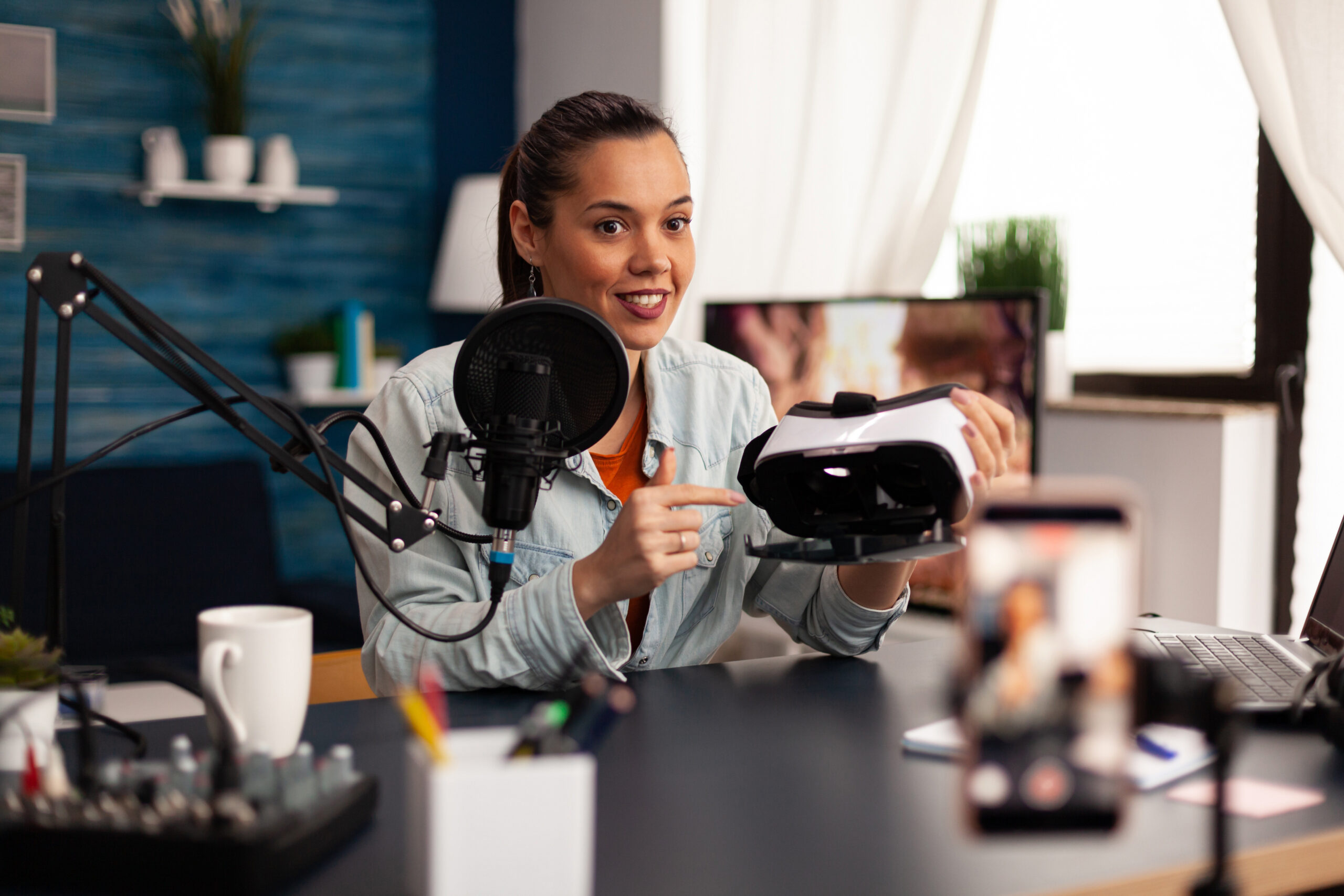
How to Build Successful Influencer Marketing Campaigns
How to Build Successful Influencer Marketing Campaigns
Greg Walthour, CO-CEO • Intero Digital • December 7, 2023
There are no textbooks that will help you learn influencer marketing from scratch and more than enough people who will pretend they know all about it. So where should you start understanding this new(ish) marketing tactic and what it means for you?
Let’s start at the very beginning.
What Is Influencer Marketing, and Why Does It Matter?
Before you can think about how to do influencer marketing, you will need to understand what it is and why it exists.
Influencer marketing involves businesses collaborating with individuals. These individuals have significant and engaged followings on social media platforms, blogs, or other online channels. This means that they can leverage their credibility within a specific niche to promote products or services to their audience.
Influencer marketing matters because it centers on trust and engagement. Because influencers are known to their followers, their recommendations hold weight. They can build trust and authenticity for your brand while expanding your reach and visibility to audiences you might not have penetrated otherwise.
Influencer marketing is also naturally more engaging content because it isn’t as tarred by the advertising brush. People often interact more with influencer-made content due to its authenticity and human-centric approach. Additionally, influencer marketing is measurable, providing evidence that can lead you to take more positive actions for your ROI.
How to Start Influencer Marketing in 12 Simple Steps
Initiating successful influencer marketing campaigns will involve several key steps, from identifying the right influencers for your brand to executing and measuring the campaign’s impact.
1. Define your goals.
Begin by clarifying your campaign’s goals and objectives. Determine what you aim to achieve, whether it’s brand awareness, increased sales, engagement, or something else. What does influencer marketing success mean for you?
2. Understand your target audience.
Who are you aiming this campaign at? Define the demographics, interests, and behaviors represented by your audience so you can find influencers whose followers align with your ideal customer profile. This will also help you choose which social media platform to target. For example, if you’re targeting an older demographic, Facebook might be the way to go. For Gen Z, a newer platform such as TikTok might be a better fit.
3. Set a budget.
Determine how much you’re willing to invest to achieve successful influencer marketing campaigns. Your budget will influence the size and type of influencers you can collaborate with. Keep in mind that influencer rates can initially cause a little bit of sticker shock. But think of those rates like this: Using an influencer is a lot like putting an ad on a billboard in front of the number of followers who engage with and trust that influencer. Sometimes that investment is well worth it, even though it might seem high initially.
4. Identify relevant platforms.
Narrow your scope. Choose the social media platforms where your target audience is most active.
5. Research potential influencers.
You can use a hashtag search to discover influencers who are already discussing topics related to your brand or perform a competitor analysis to see whom leaders in your industry are working with. Alternatively, you could consider using databases that provide lists of influencers, their statistics, and contact information.
6. Evaluate these influencers.
Familiarize yourself with industry-standard engagement rates to decrease your chances of reaching out to influencers who might have purchased or aged out of your audience. Rate potential influencers for their relevance, their alignment with your brand goals, the size of the following, the level of engagement they motivate from their followers, and the quality of the content they put out into the world.
7. Reach out.
Try to contact your favorite candidates with a personalized and genuine message. Express your interest in collaborating and explain how your brand aligns with their content and audience. If you are still needing more information after your evaluation stage, request a media kit from the influencer. This typically includes case studies of previous brand partnerships, content rates, and engagement rates.
8. Negotiate terms.
Discuss campaign details, including compensation, content-creation guidelines, ideal posting schedule, and everything that will determine the effectiveness of influencer marketing for your brand. Ensure that both parties are clear on these expectations and deliverables. We recommend putting these terms and details into an agreement signed by both parties to ensure the deliverables and rates are provided as promised.
9. Work together on content creation.
Establish how to work with influencers to get the most out of your campaign. Collaborate closely by providing helpful resources the influencer can use to create authentic and engaging content that resonates with their audience. It’s not uncommon to request the opportunity to review and provide edits for content before it goes live. This ensures it will align with the voice and talking points that you are looking to achieve for your brand.
10. Monitor and measure the campaign.
Launch the influencer marketing campaign according to the agreed-upon schedule and monitor the content’s performance, engagement, and audience feedback. As the campaign evolves and concludes, evaluate its effectiveness against your initial objectives by using influencer marketing KPIs.
11. Establish compliance.
Ensure that your influencer campaigns comply with legal and disclosure requirements. Agree, for example, to always disclose when content is sponsored and to adhere to relevant advertising guidelines.
12. Head toward long-term relationships.
When you find successful influencer marketing campaign examples, consider building long-term relationships with those people. Repeat partnerships can lead to more authentic and impactful campaigns over time.
Best Practices for Influencer Marketing Success
The above steps form an influencer marketing guide that can help you build relationships with relevant influencers and craft successful campaigns over time. Within those steps, you will learn how to do influencer marketing more effectively and impactfully each time you try, but here are some initial strategies to live by:
• Clarify goals and expectations.
The more definite you can be with your objectives for a campaign, the better the chance of success. Spend extra time at the outset determining what you aim to achieve. Do you want to increase brand awareness within a new demographic? Do you want to push the needle on lead generation this quarter? Then, trust the influencers you work with; be transparent about the goals of the campaign so that they can adapt their own strategies accordingly.
• Find the perfect influencer marketing KPIs.
Learn how to measure the effectiveness of influencer marketing for your brand by zeroing in on your success metrics. The essential metrics for evaluating influencer marketing impact can be categorized into three key areas: brand exposure, engagement, and conversions. Brand exposure metrics measure reach, impressions, and the “share of voice” you’re getting (in other words, how prominent your brand is in the influencer’s conversations). Engagement metrics are things like comments and shares. And conversions measure how often a follower crosses over and becomes connected to your brand directly.
• Favor genuine relationships.
Some influencers may tempt you with the size of their followings, but the most impactful content will be content that resonates with the influencer’s audience while effectively promoting your brand. Do your research thoroughly, and give extra points to the influencer that aligns with your brand values and those of your target audience. Consider factors such as the influencer’s niche, follower demographics, engagement rates, unique voice, and authenticity. Micro-influencers, in particular, can be highly effective for niche campaigns.
• Work on your rapport over the long term.
Relationships are everything in the influencer marketing world, so work to establish genuine relationships with influencers. Engage with them beyond the campaign, show appreciation for their work, and stay in touch. You could even plan further collaborations that add value to your brand. You might consider co-hosting a webinar, for example, or co-creating a how-to video series. Value-added content can enhance your brand’s authority and credibility in the eyes of both the influencer’s audience and yours.

